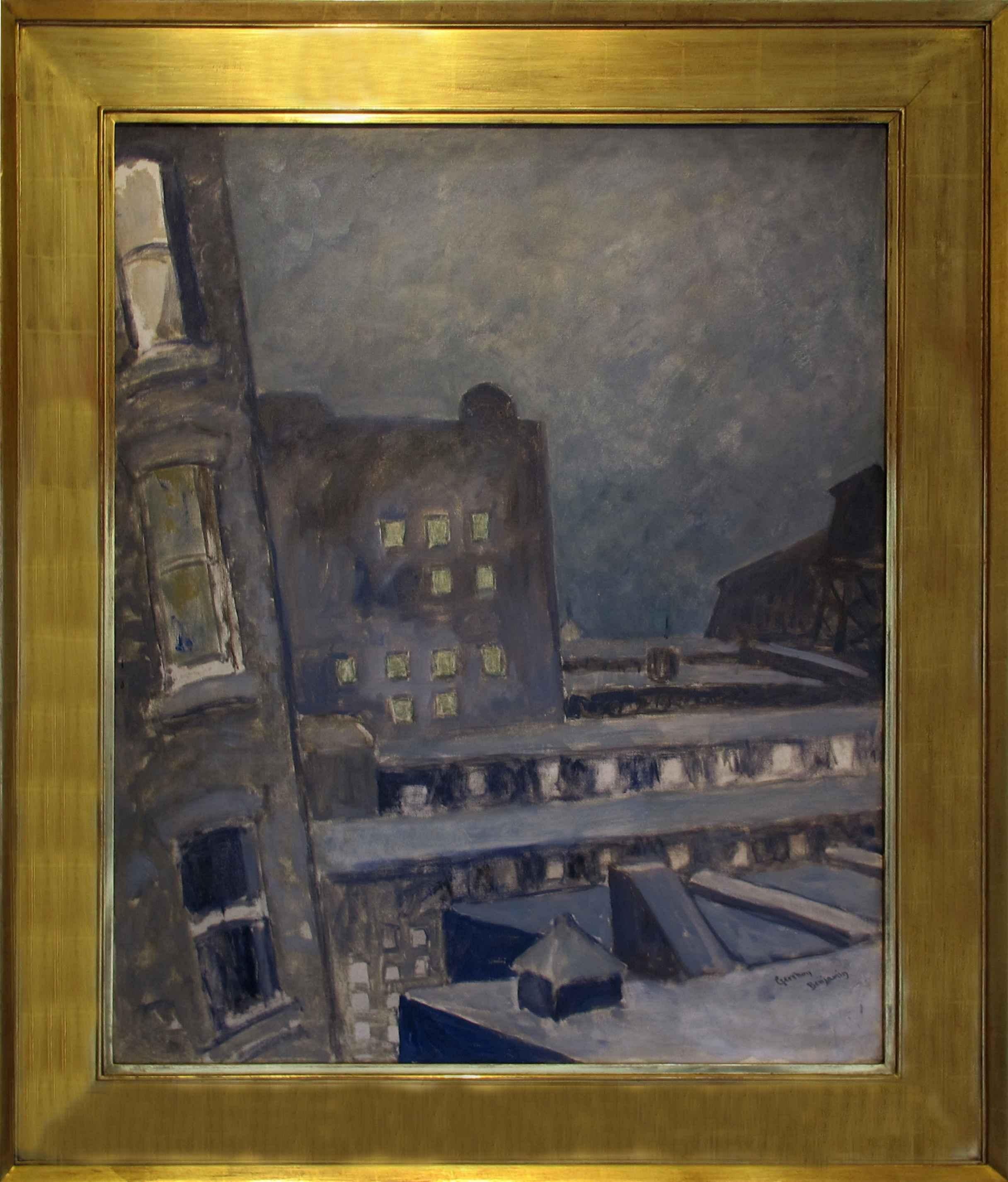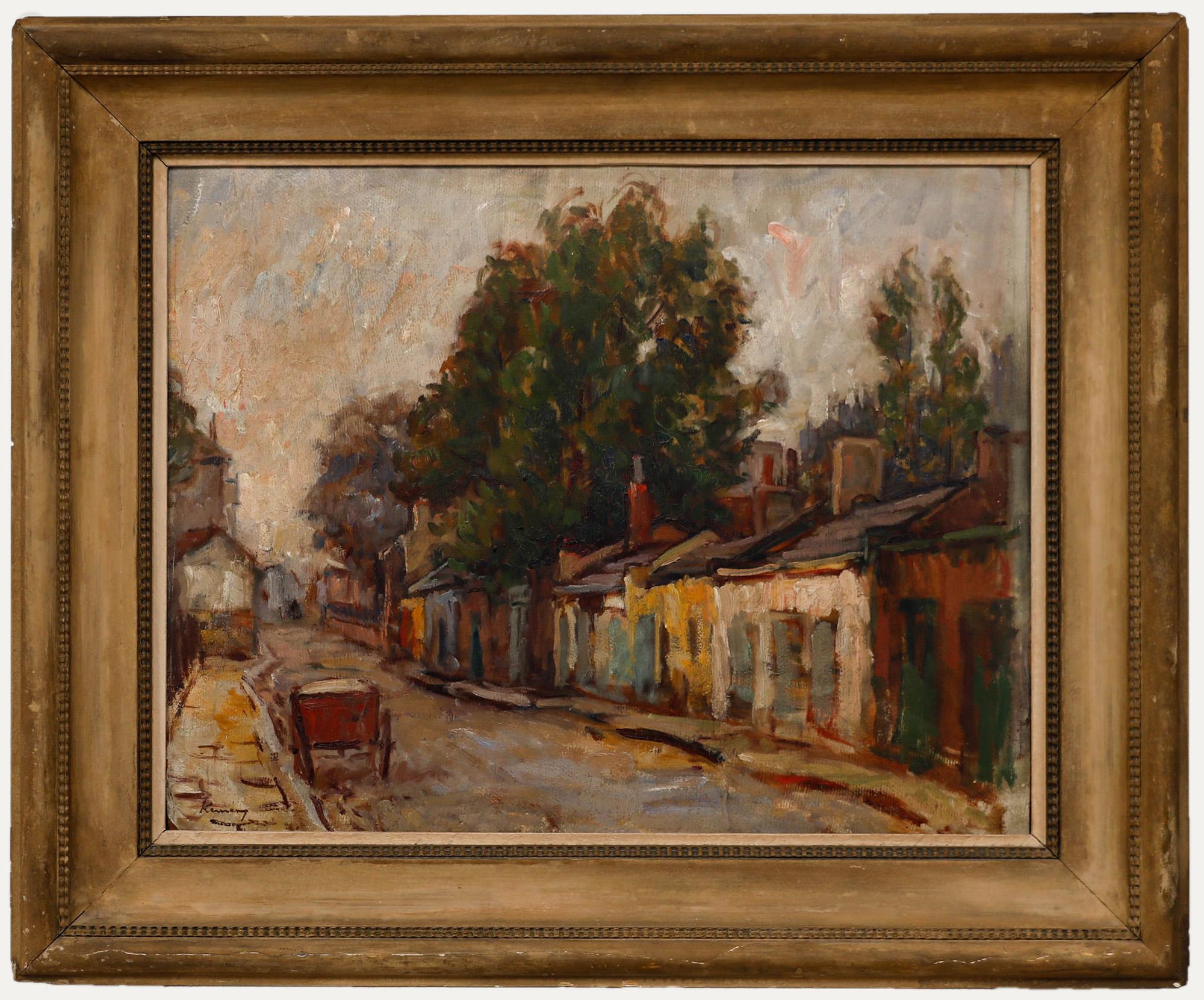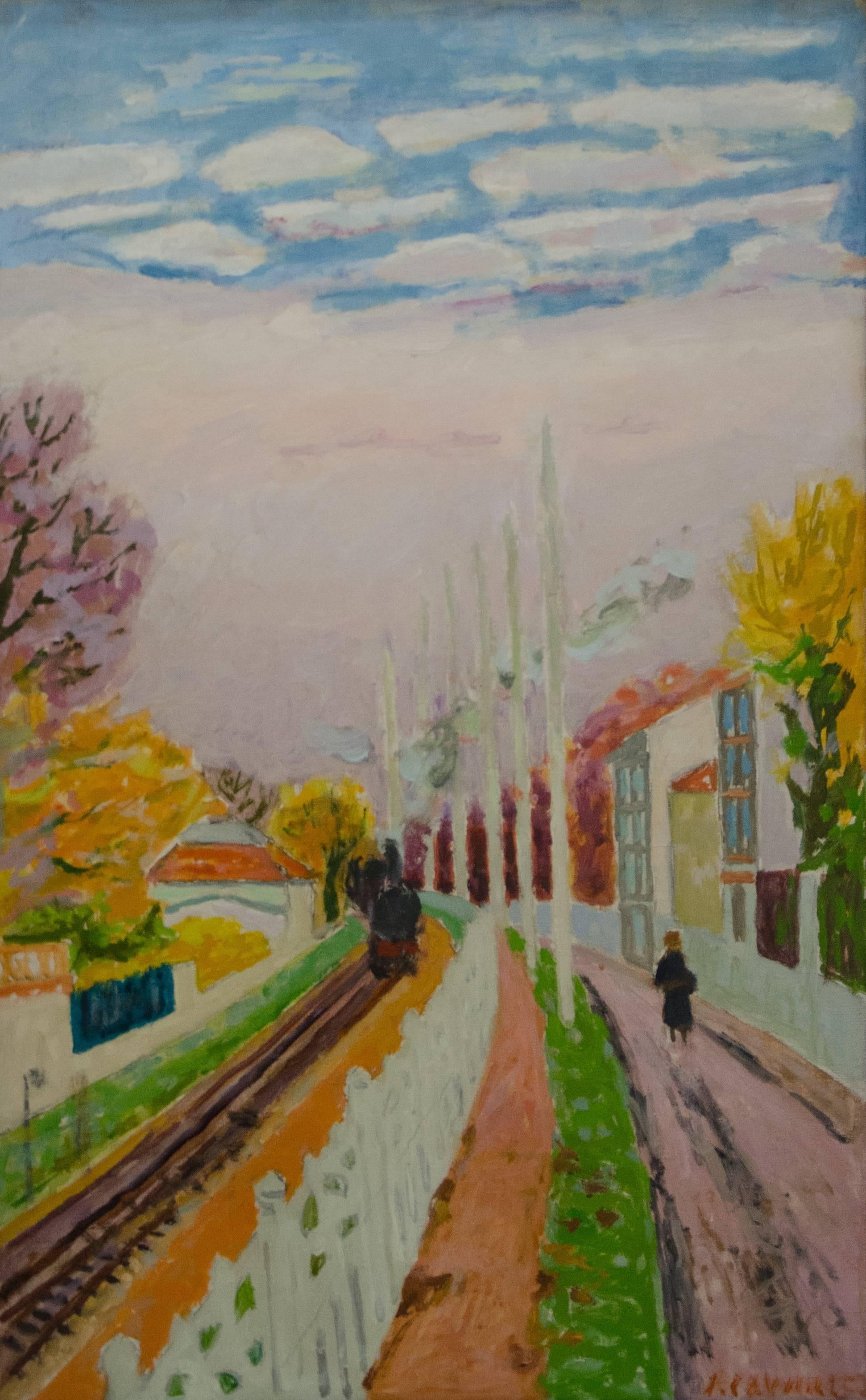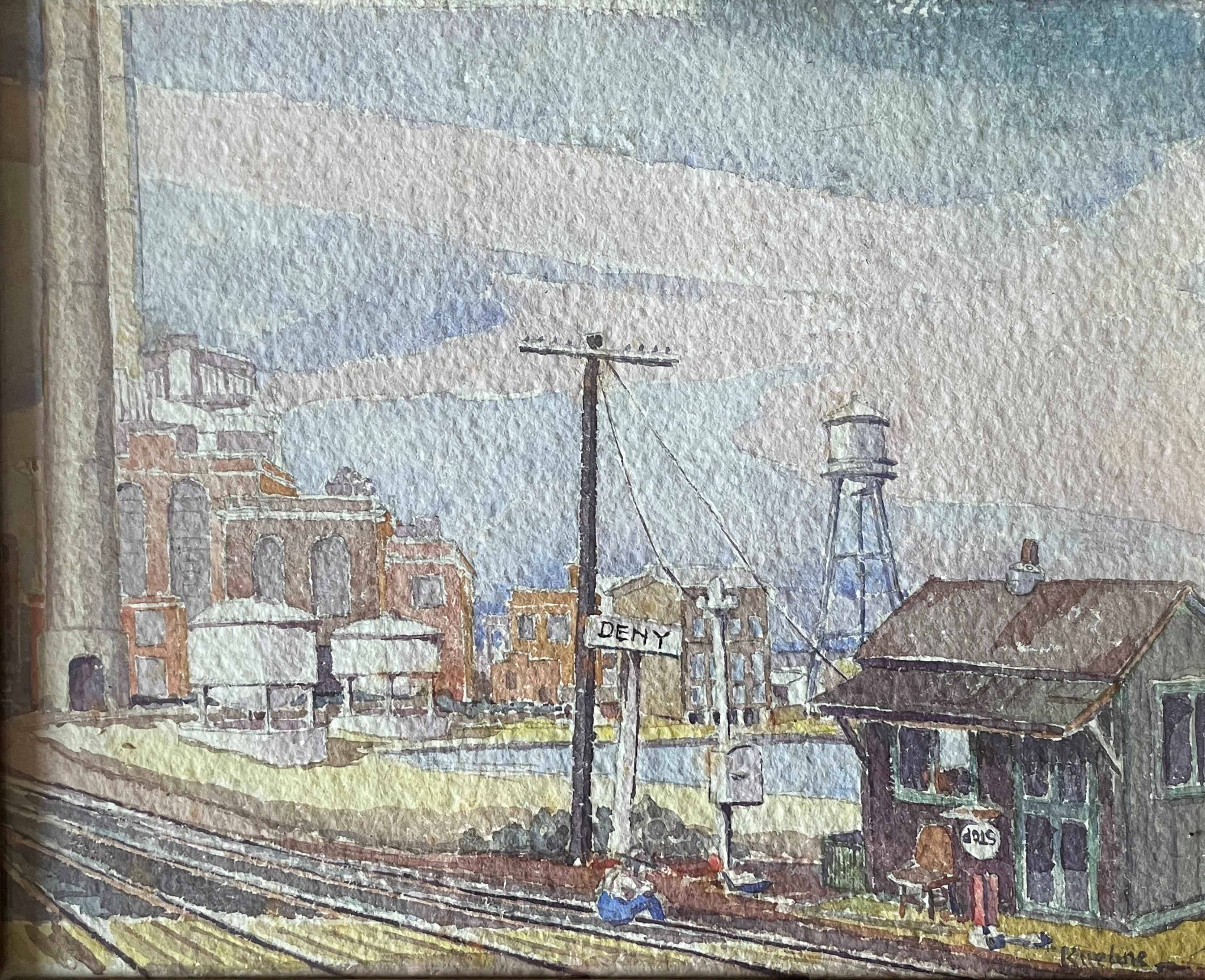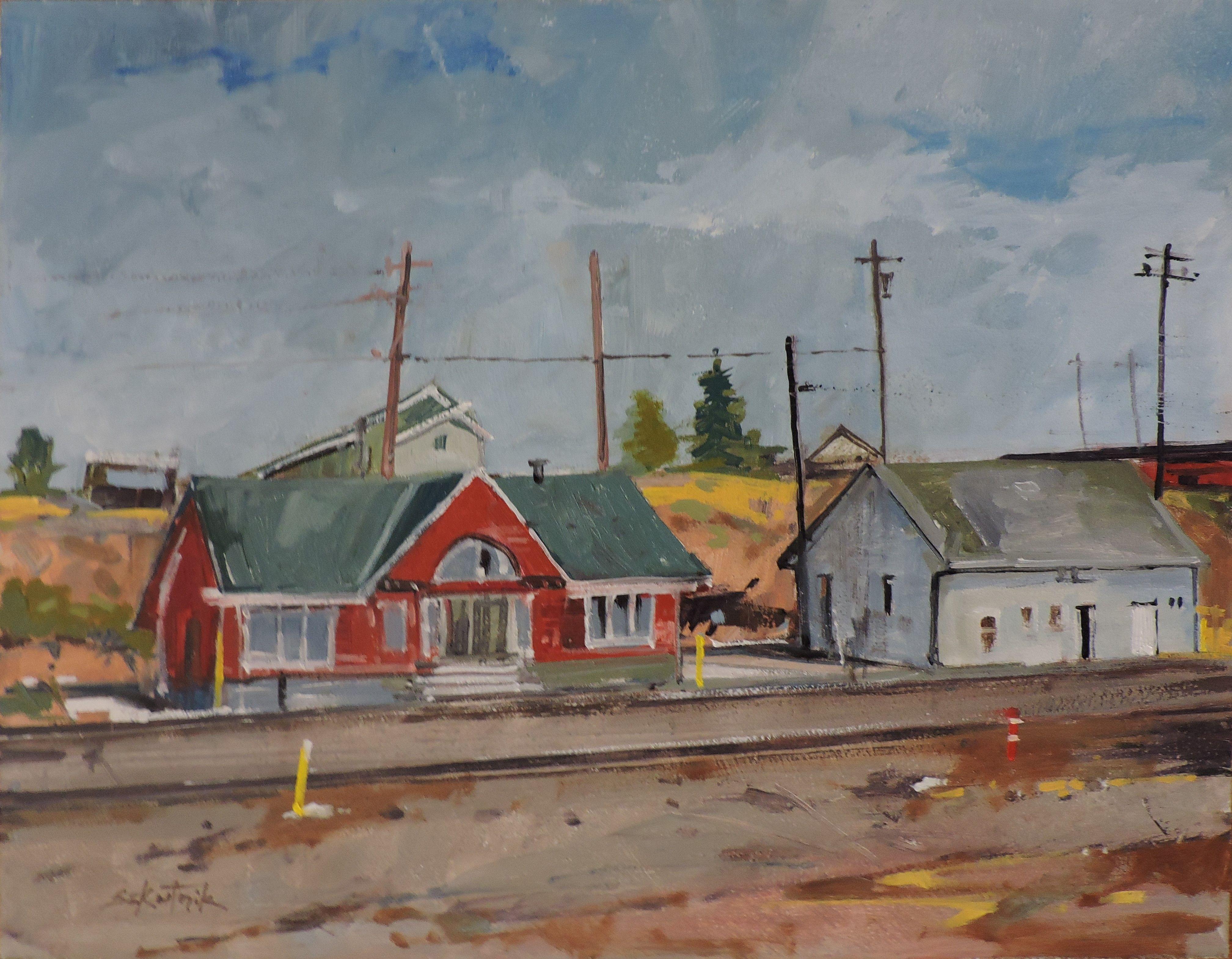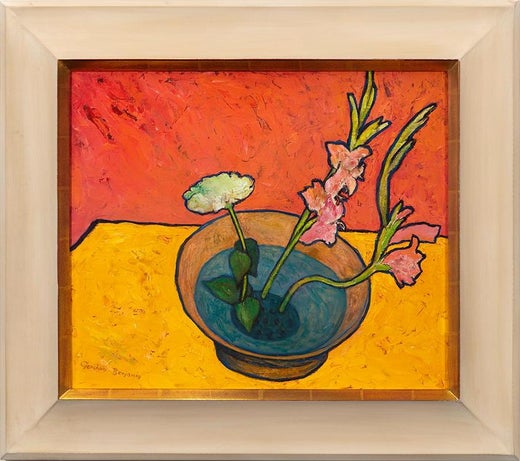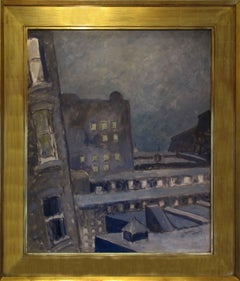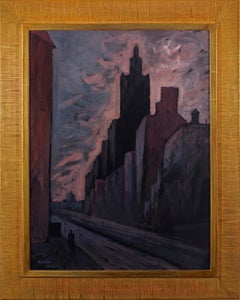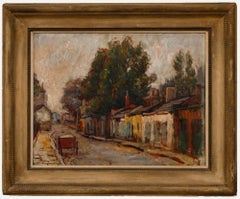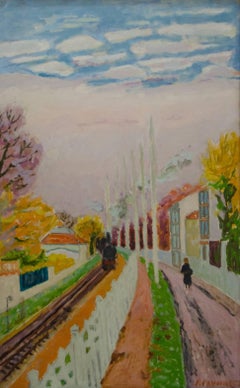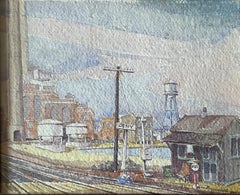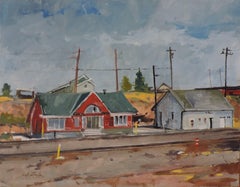Gershon Benjamin"The Train Depot"Circa 1930
Circa 1930
About the Item
- Creator:Gershon Benjamin (1899, American)
- Creation Year:Circa 1930
- Dimensions:Height: 17 in (43.18 cm)Width: 21 in (53.34 cm)Depth: 2 in (5.08 cm)
- Medium:
- Movement & Style:
- Period:
- Condition:
- Gallery Location:Lambertville, NJ
- Reference Number:Seller: JOL1109180601stDibs: LU3743898912
Gershon Benjamin
In a body of work that spans seven decades, obscure American modernist artist Gershon Benjamin explored a varied range of tone, style and subject matter in watercolor, oil and charcoal. Not one to resign himself to a single trademark theme, Benjamin focused on an eclectic array of subjects. His paintings included landscapes, portraits, still lifes and urban scenes.
Benjamin was born in Romania just before the turn of the 20th century. His family moved to Montreal in 1901 to escape ethnic persecution. At 10, Benjamin began studying art at the Canadian Council of Arts and Manufacturers, in Quebec. When he was 12, the Royal Canadian Academy admitted Benjamin.
In 1923, Benjamin moved to New York City, where he secured a night job in the art department of The Sun newspaper. He also enrolled in the Art Students League, where he learned engraving from the notable lithographer Joseph Pennell and drawing from illustrator John Sloan.
Benjamin found inspiration in the work of Pablo Picasso and Paul Cézanne. He depicted urban life in meditative Expressionist paintings that later drew comparisons to the Ashcan School — Benjamin painted scenes of New York City’s blocky skyline, elevated subway trains, empty streets at dawn and the Brooklyn Bridge as he saw them on his way home from his night shift at the newspaper.
In New York, Benjamin forged friendships with creative people who were as in love with art as he was and painted with them in Gloucester, Massachusetts, during the city’s hot summers. A number of his acquaintances found a fair amount of fame — including artists Mark Rothko, Raphael Soyer and Milton Avery — whereas Benjamin sought none. And when artists of the era in Manhattan and elsewhere began to work in the style that would become known as Abstract Expressionism, Benjamin continued to create representational art. He remained largely obscure throughout his career, declining to promote or market his still lifes, landscapes and portraiture.
Benjamin's works are held in a number of private and public collections including the Pennsylvania Academy of Fine Arts and the Ulrich Museum of Art.
Find original Gershon Benjamin paintings on 1stDibs.
- ShippingRetrieving quote...Shipping from: Lambertville, NJ
- Return Policy
More From This Seller
View All1920s Modern Landscape Paintings
Canvas, Oil
1940s Modern Landscape Paintings
Oil, Gouache, Board
1950s Modern Landscape Paintings
Gouache
1940s Modern Landscape Paintings
Oil, Gouache
1930s Modern Landscape Paintings
Canvas, Oil
20th Century American Modern Landscape Paintings
Oil, Canvas
You May Also Like
20th Century Landscape Paintings
Oil
Mid-20th Century Modern Landscape Paintings
Canvas, Oil
1910s American Impressionist Landscape Drawings and Watercolors
Paper, Watercolor
21st Century and Contemporary Impressionist Paintings
Oil
20th Century Impressionist Landscape Paintings
Oil
20th Century Landscape Paintings
Oil
